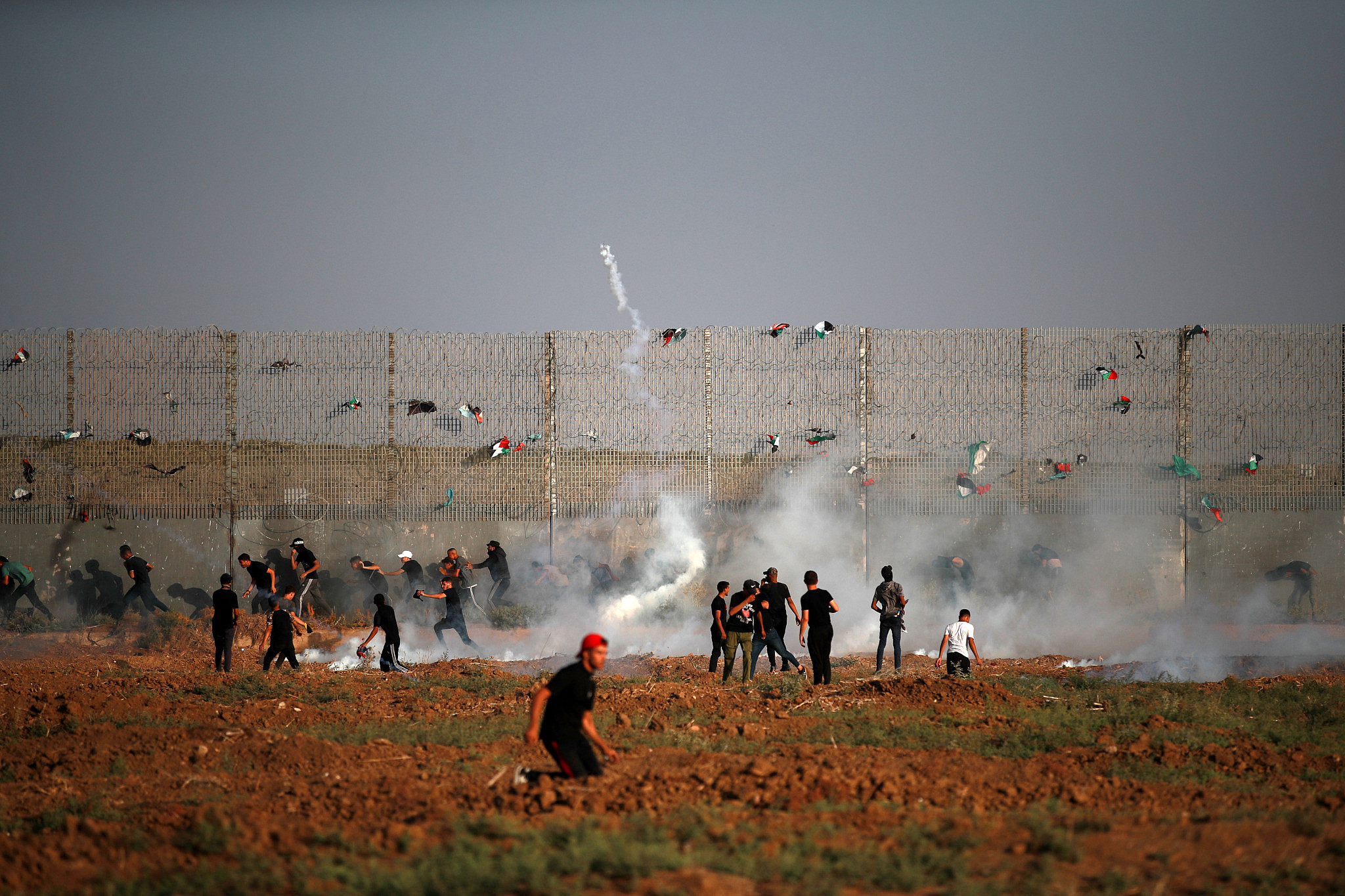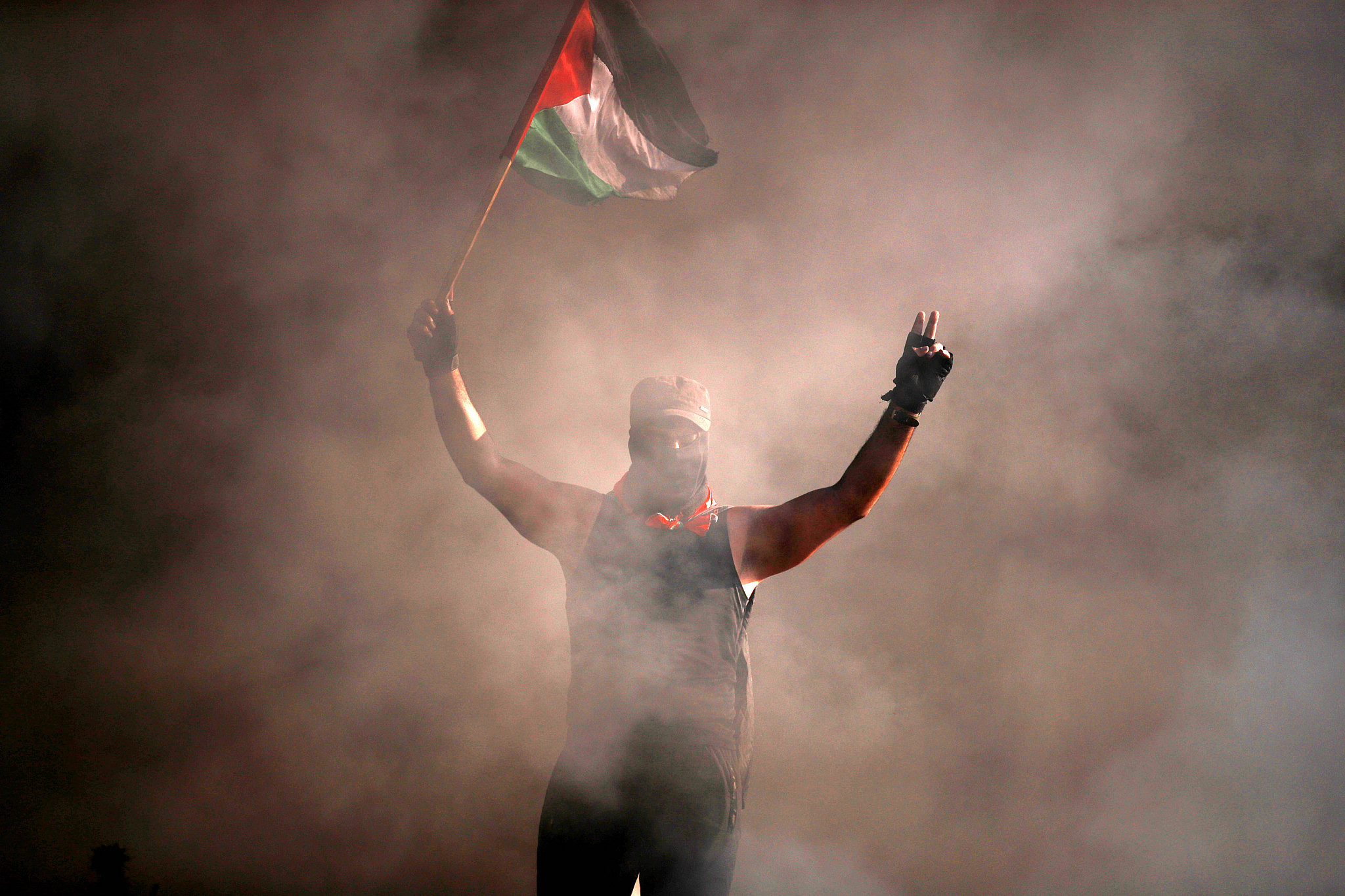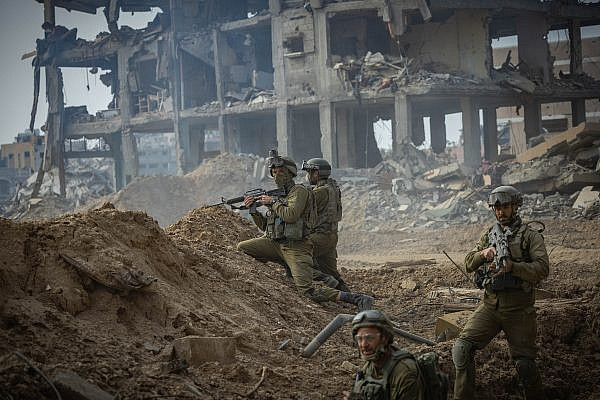For the past month, hundreds of Palestinians in the Gaza Strip have been marching to the Israeli separation fence every day in a powerful display of public outrage and frustration within the besieged enclave. The intense demonstrations — which were largely unarmed but at times involved incendiary objects and explosive devices — were met with a brutal response from the Israeli army, including live fire, tear gas, and even air strikes on Hamas targets.
In a sudden turn of events on Thursday, the organizers announced a halt to the demonstrations after mediators reportedly secured several interim demands from the Israeli authorities. The protesters, however, have pledged to return if these promises are not met.
Until yesterday, the scenes on the ground in Gaza had been likened to the 2018-19 Great March of Return, with some analysts describing the protests as an effort to revive the same mass mobilization. The demonstrations were not as large or dynamic as their 2018 antecedent, but the scale and intensity of the daily scenes captured the attention of local TV and media outlets in Gaza; in contrast, the events seemed to largely fly under the international media radar, despite Israel dramatically escalating its violent responses over the weeks.
The majority of participants have been young Palestinians rallying under the title, “al-Shabab al-Tha’er” (“the Revolutionary Youth”). Emerging Palestinian activists — including prominent figures who led the Great Return March, many of whom sustained permanent injuries from Israeli sniper fire from that period — took the lead in organizing the demonstrations, emphasizing a non-partisan identity while receiving the support of multiple political factions, including Hamas, the Islamist party governing the strip.

Among their collective demands, the protesters placed an emphasis on the goal of easing Israel’s severe restrictions on the movement of goods and people through the crossings. Yet the demonstrations were not limited to economic concerns only: they also voiced a call for an immediate cessation of Israeli settlers and soldiers storming the Aqsa Mosque Compound (with frictions increasing during the Jewish high holidays), and a halt to the oppressive conditions against Palestinian prisoners in Israeli jails.
Violence at the border
Along with setting their demands, the organizers emphasized to Palestinians the importance of keeping up their mobilization along the Israeli fence. They also warned Israel about their own capacity for escalation, such as incendiary balloons flown in the direction of southern Israeli towns, as well as hand grenades and explosive devices targeting sections of the wall and other military installations.
On Sept. 14, the Palestinian Health Ministry in Gaza reported an unidentified explosion during the protests near the eastern Israel-Gaza fence, which killed six Palestinians and left 25 others seriously injured. On Sept. 22, as confrontations between protesters and soldiers escalated, the Israeli Air Force conducted several airstrikes on security outposts and other Hamas targets in the strip. Separately, a young Palestinian was also shot dead by Israeli soldiers at the protests that same evening, further adding to the tensions that had been building at the border.
Later, dozens of young protesters started burning tires as they headed to Malaka, a rural district in eastern Gaza, in commemoration of the anniversary of Israel’s withdrawal of its settlements from Gaza in 2005. The participants raised signs of solidarity with Palestinian prisoners in Israeli jails, and decried the Oslo Accords, signed between Israel and the Palestinian Authority, whose 30th anniversary was marked earlier this month. Incendiary balloons were also launched, causing fires in several locations inside Israel.
In response, the Israeli army fired an array of artillery, live ammunition, and tear gas canisters at both the protestors and journalists following the events. Ashraf Abu Amra, a Palestinian photographer who was covering the protests, was hit in the hand by an Israeli tear gas canister; he was subsequently transported to Turkey for urgent medical treatment in an effort to save his hand.

Shortly afterward, Israel tightened its economic restrictions on the Gaza Strip, both as a punitive response and as part of its routine closures of the occupied territories during the Jewish holidays. On Sept. 19, the Israeli authorities closed the Erez Crossing, also known as the Beit Hanoun Commercial Crossing, effectively preventing more than 18,500 Gazan workers from commuting to their jobs across the border. These workers, who hold Israeli-issued work permits, are estimated to inject approximately $2 million per day into Gaza’s crippled economy. The crossing has since been reopened under the terms of the protests’ suspension.
Intensified Palestinian resistance
Gaza’s eastern borders have long been a frequent hotspot of confrontation and violence between Palestinians and Israelis; hardly a year goes by without the looming fear and possibility of military escalation. Each episode of unrest is fueled by a variety of motivations, above all by Palestinians trying to pressure Israel to lift its crippling siege on the occupied population.
The current Gaza protests were initiated amid an intensification of both Palestinian resistance and Israeli assaults throughout the occupied territories. For months now, Israel has been attempting to neutralize Palestinian armed groups operating in major West Bank areas like Jenin and Nablus; about two weeks ago, for example, Israeli special forces conducted two raids in the Jenin refugee camp, killing five Palestinians.
Notably, the Israeli army has returned to employing aerial power — helicopters, fighter jets, and armed drones — as part of its incursions in the West Bank, including during its large-scale invasion of the Jenin camp in early July. Such strikes have severely damaged the Jenin camp’s already fragile infrastructure, with subsequent power outages affecting significant parts of the area.
More recently in Jerusalem, social media footage showing Israeli settlers and armed forces attacking Palestinian women and the elderly at Al-Aqsa Compound led to an outpouring of rage among Palestinians in Gaza. These escalations coincided with the Jewish high holidays, when large numbers of Jewish worshippers, encouraged by fundamentalist groups and politicians, visit the Aqsa Mosque Compound, known to them as the Temple Mount. During these weeks, Israeli authorities shut most of its checkpoints and crossings in the occupied territories, and restrict Palestinian access to the holy site.

The suspension of the mobilization at the Gaza fence thus comes on the heels of extensive international mediation talks to lower further frictions. At the forefront of these negotiations was the UN Special Coordinator for Peace in the Middle East, Tor Wenneseland, who also reportedly involved Egypt and Qatar to make the breakthrough. Gaza laborers were eventually permitted once again to cross the border and resume their jobs within Israel, with the latter lifting the days-long closure at Erez.
“[We’re] deeply concerned by the escalating tensions in and around Gaza. The situation inside the Strip is dire and we must avoid another conflict that will have grave consequences for all,” tweeted Wenneseland on Thursday, hours before the announcement of the end to the protests. “The people of Gaza have suffered enough and [they] deserve more than a return to calm.”
The sustainability of this newfound calm remains uncertain. For the average Palestinian in Gaza, Israel’s easing of restrictions is seen as a strategic move driven by its own interests, rather than a genuine gesture of goodwill. “It [the occupation] is merely yielding to our demands,” Ahmed Saleh, a dedicated Gaza protestor who has been at the forefront along the fence with Israel, told +972. Allowing Gaza workers back into Israel, he stressed, represents just one facet of their broader objectives.
At the same time, many Palestinians, having endured multiple rounds of military and popular confrontations with Israel, argue that sustained friction is what actually makes Israel comply with their demands, and thus suggest that the protests should continue in order to keep that long-term pressure. Others believe groups like Hamas have an interest in renewing a popular front that could test Israel, amid the latter’s internal crisis over the far-right government’s judicial overhaul. Through such protests, the Gaza-based political factions could then wage a “cold battle” with minimal losses compared to armed attacks.
Reviving the Return March?
The question of whether Palestinians in Gaza are envisioning a recreation of the Great Return March has thus elicited much attention in the wake of the new protests. Back in 2018, the protesters had marched in the name of returning to the land from which they and their ancestors were forcibly displaced in the Nakba of 1948. They also conveyed a powerful message of unity that emphasized the urgent need to end Israel’s illegal blockade of the strip.

The Return March, however, simultaneously crystallized Israel’s harsh tactics of suppressing any form of popular protests in Gaza along the fence, even unarmed struggles to end the blockade. When the march ended in 2019, the toll of fatalities was staggering: Israel had claimed the lives of about 250 protestors, which included the elderly, journalists, women, children, and medical personnel. The brutal crackdown underscored the extent to which the international community has granted Israel impunity, both in taking Palestinian lives and in denying the most basic human rights to over 2 million people in Gaza.
In principle, the new protests are driven by the same profound yearning for freedom and self-determination, while expressing frustration with the deteriorating living conditions and repeated closures of Gaza’s civilian and commercial crossings. The united anger around provocations in Jerusalem was also a testament to the continued interconnections among Palestinians across their geographic fragmentation, and their persistence in combating Israeli aggressions.
Indeed, the new protests, much like those five years ago, managed to bridge a political divide that has long exacerbated the suffering of the people in Gaza. Individuals from various political affiliations and backgrounds were marching side by side, united in their call for dignity and freedom. Holding Palestinian flags and clinging to their national heritage, the protesters stood resolute in front of the Israeli troops at the border. For a rare moment, Palestinians in Gaza felt common ground in what seemed like a remedy for their biggest political grievances — both the long rift between Hamas and Fatah, and Israel’s ongoing blockade.
Most read on +972
It has therefore become increasingly clear that Palestinians in Gaza, after enduring 16 years of siege, are reaching a breaking point. Through these protests, like other resistance activities throughout the occupied territories, Gazans are demonstrating a sustained battle against their occupiers, a continuation of the “Unity Intifada” of 2021. For young Palestinians, whose dreams have been ruined and lives deemed disposable under Israel’s rule, such protests are often their only hope of confronting a decades-long system of oppression and abuse, a source of hope for escaping their lifelong status as refugees in their own homeland.
The crucial question, then, is not why Palestinians are fighting the Israeli army in Jenin, or challenging settler takeovers in Jerusalem, or protesting at the Gaza fence. Rather, it is how many Great Return Marches or Revolutionary Youth-like groups must Palestinians organize, and how many lives must they sacrifice, before achieving their ultimate goal of freedom.




